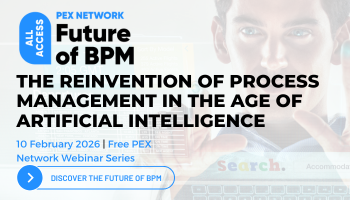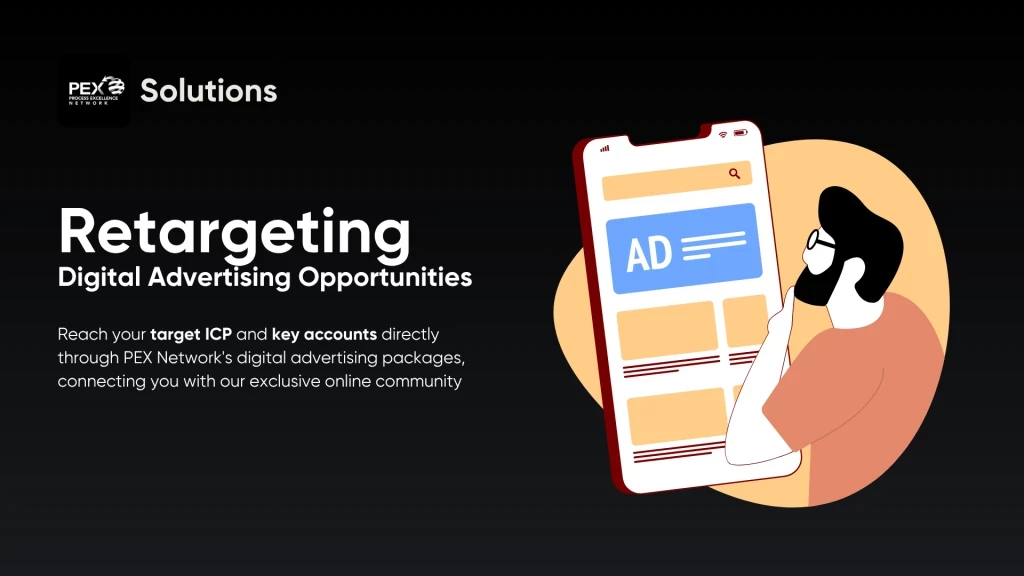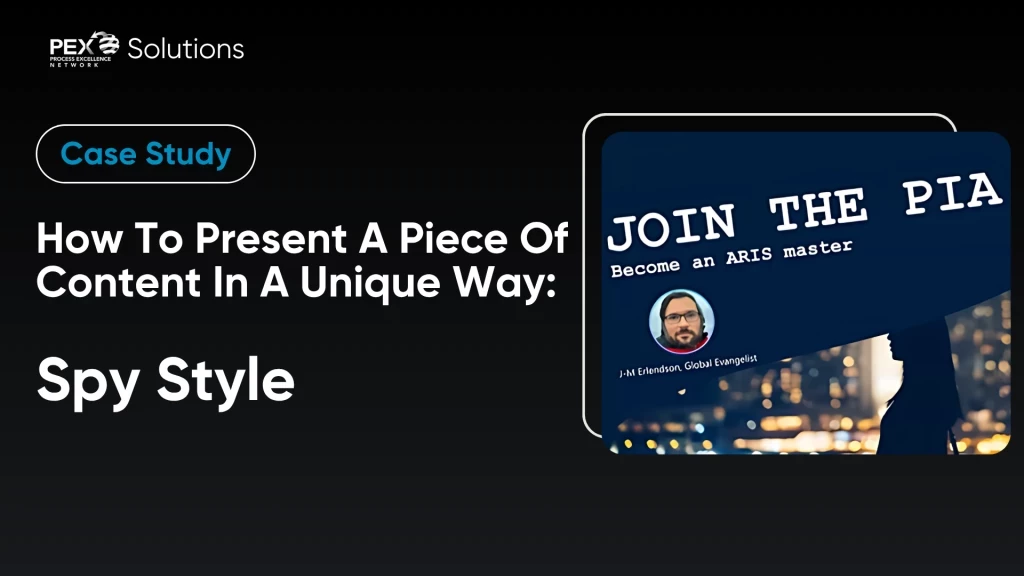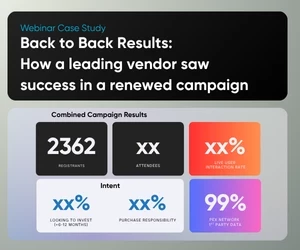Trust the process: What can leaders learn from Mikel Arteta’s transformation at Arsenal FC?
Arsenal’s “trust the process” modus operandi is not just a rallying cry. It’s recognition that sustainable success is built, not bought
Add bookmark
Over the past six years, one phrase has become synonymous with Arsenal Football Club, reverberating around the fanbase: “trust the process.”
This is not just another mantra or catchphrase. Under Mikel Arteta’s leadership, and backed by owners Kroenke Sports & Entertainment (KSE), it has come to embody a philosophy rooted in structure, patience, long-term strategy and iterative improvement. Interestingly, this same mindset and approach are the bedrock of successful and effective business process management (BPM).
As a process excellence lead, covering numerous roles across Harrods, the John Lewis Partnership and GlaxoSmithKline (and of course as a life-long Arsenal fan!), I’ve come to see the remarkable parallels between Arsenal’s journey back to the upper echelons of European football and the transformational practices that underpin business processes and drive sustainable success in complex organizations. From Lean Six Sigma to artificial intelligence (AI) powered decisions, BPM and systems thinking, Arsenal’s methodology offers a rich insight for anyone looking to lead change in the business world.
Join the PEX Network community

Don't miss any news, updates or insider tips from PEX Network by getting them delivered to your inbox. Sign up to our newsletter and join our community of experts.
Learn MoreA clear vision anchored in long-term strategy
When Mikel Arteta took the reins in 2019, my dear Arsenal were in disarray. An unbalanced squad, a fractured fanbase, a lost identity and sub-par results, all resting on the backs of underperforming (yet overpaid?!) players and the glory of Arsene Wenger’s yesteryears. Immediate fixes were tempting, but Arteta and then-technical director Edu chose to define a clear vision: a young, dynamic, tactically versatile team built for sustained success.
This mirrors what we often see in business process initiatives. Organizations in crisis often rush into solutions; new tools, restructures or expensive external consultants, without true clarity on why they’re doing it in the first place. Process improvement begins with a purpose. Whether one is applying Lean principles to eliminate waste or launching an AI-enabled transformation, the organization must first articulate a clear strategic intent, much like Arsenal’s footballing blueprint.
The value of taking a breath, embedding a framework and diagnosing a problem (or lifting the bonnet on a whole line of business) cannot be understated. I tend to favor a triangulated diagnostic approach, utilizing data, SME feedback and meticulously reviewed process documentation, all through a “process-first lens.” I'm sure I’ll share more on this in future publications.
Every single initiative, program, project or idea must start with a clearly defined “north star," and every process decision should trace back to this long-term objective.
Think about people: Culture before tactics
One of Arteta’s first major decisions was to remove Mesut Özil from the squad. Özil – a cult hero and my favorite player at the time – was a technically gifted but culturally misaligned player. He was largely considered to be a luxury player, reminiscent of that underutilized and misunderstood bit of tech in the office that just wasn’t adding the value it should have. Özil's exile sent a powerful message. A message that values matter, and a message that the non-negotiables are exactly that – non-negotiable. The club doubled down on team-first mentality, accountability and emotional intelligence.
Business process leaders often underestimate the impact of effective cultural and change management. Process-centric projects so often fail due to leaders neglecting the people-side of change. This may include resistance to new workflows, a siloed thought process or a lack of ownership. How often have we seen a beautifully drawn process map or carefully-crafted business case go to waste due to one of these?
An iterative culture of ownership, collaboration and psychological safety is critical if we are to truly empower teams as co-owners of improvement as oppose to passive recipients of change. Iterative has to be a key takeaway here. Mesut Özil may have been one of Arteta’s first high-profile casualties, but he certainly wasn’t the last and there will inevitably be more to come.
Register for All Access: BPM Business Process Management 2025!
Agility and iterative improvement
Arteta’s Arsenal didn’t click overnight. Opposition fanbases would argue that without winning the Premier League in recent years they still haven’t quite clicked, (despite nearly clinching titles in both 2023 and 2024). Early results were mixed, prompting criticism and resulting in back-to-back eighth-placed finishes. Instead of abandoning the plan, the club refined it iteratively, adjusting tactics, bringing in better-suited players and adapting to emerging data and feedback.
Much was made of the club’s multi-year, five-phase plan, designed to embed stability before delivering “sustained success and silverware.” One could argue that the plan hasn’t quite gone to plan, but the agility to re-benchmark cannot be understated. As circumstances, knowledge and technology change, we simply must have the flexibility to replan and go again. These are the principles of pure continuous improvement. Lean thinking tells us to start small, learn, experiment and expand. Any Agile delivery team would live and die by the same principles: to deliver iterative value, adjust and continue. Arsenal’s recruitment, mindset, and to some extent performances, are a classic example of Plan, Do, Check and Act (PDCA) in action on the sporting stage.
Embedding agility into process governance is key. The behaviors and expectations of our customers are constantly evolving – and so must we.
Arsenal’s five-phase plan:
- Phase 1: Stabilization and cultural reset.
- Phase 2: Defensive solidity and tactical identity.
- Phase 3: Attacking evolution and squad development.
- Phase 4: Consistent contention.
- Phase 5: Sustained success and silverware.
Data and insight: Telling stories and enabling value
Arsenal’s modern resurgence is heavily informed by data. Recruitment and performance analysis using Arsenal’s highly acclaimed StatDNA platform (acquired for ~£2 million in 2012 and winning the club the Alpha Award for best Analytics Organization in 2023). In-game analysis and training optimization. Enhanced fan engagement. The GPS vests by StatSport that all clubs tend to rely on these days. It’s all data. Data that the club is using to gather insight and tell a story of both performance and improvement. A story that needs to be told at speed, ahead of the next decision, ahead of the next big fixture and ahead of footballing rivals. The club may have embraced AI and analytics, but one thing is for certain: data isn’t the strategy, it is an enabler.
Similarly, I utilize data, AI, automated reporting and process mining every single day, but only to enable my end goal. These tools allow me to be more effective in my delivery, to be more efficient in my storytelling and to be faster in how I deliver my outcome of true value, aligned to whichever north star I’m currently pointing towards. Essentially, technology accelerates my outcomes, but cannot define them.
Systems thinking. Not quick wins
Perhaps the most profound shift under Arteta is the adoption of a resemblance of systems thinking. Every decision, whether it’s player acquisition, youth development or match strategy, is made with an understanding of its impact on the club’s broader ecosystem. The club rebuilt its youth-to-first-team pipeline (with former captain Per Mertesacker now running the club’s academy), improved medical and training systems (in partnership with Sobha Realty) and invested in long-term infrastructure. All of this is unlikely to deliver immediate benefits, but stands the club in great stead to deliver success further down the line.
Likewise, business process professionals must take an all-encompassing approach to transformation. Improving a single workflow without understanding the wider impacts often leads to local optimization at the expense of the wider system’s performance, leaving us with those dreaded silos we love to moan about – and their subsequent inefficiencies. Disciplined BPM reinforces this need to see the whole system and all feedback loops, not just isolated tasks.
Just as Arteta overhauled both the youth academy and the first team to align with a shared philosophy, retailers such as John Lewis have spent considerable effort redesigning lines of business and processes to connect siloed teams into a seamless omnichannel fulfilment model. Holistic thinking and cross-functional collaboration helped to deliver an optimized Click & Collect operation, spanning most products, 40+ John Lewis stores and 400+ stores of co-brand Waitrose, all with process efficiency at its heart.
Join us at All Access: AI in Business Transformation 2025!
Leadership and communication go hand-in-hand
A huge part of Arteta’s success (and therefore Arsenal’s) is a clear and consistent leadership narrative, based on sharing both the vision and the progress, keeping stakeholders, players, board members, fans and even those pesky pundits aligned. In times of trouble the rhetoric remains transparent yet resolute, and in times of celebration, there is a reminder of the values instilled in the team and the club every single day.
In process leadership, we must also narrate the change journey for our stakeholders and customers. Senior stakeholders want measurable ROI, but they also need to be told the story of the journey and (perhaps more importantly) feel the story of transformation. Other stakeholders will need clarity, reassurance and engagement. Communication and engagement, throughout the end-to-end process lifecycle, are far more than a box-ticking exercise. It is a core capability, requiring great skill, empathy and humility.
Tell the story of your process journey. Do it with emotion and celebration. Do it succinctly at an executive level and burrow down the rabbit holes when the audience demands. Tell of your vision, of the problem statements you’ve identified and possibly fixed, of your progress and wins, of the lessons you’ve learned and of the value and outcomes you’ve delivered.
I’m a firm believer that reflection forms a vital part of our process journey. The season before Mikel Arteta took over, Arsenal may have finished in fifth place, but they were a staggering 28 points behind league winners Manchester City. Recent seasons where the team narrowly missed out on becoming champions may have been disappointing, heartbreaking even, but taking that moment to reflect really brings the journey to life. It is an indispensable reminder of progress over perfection, which is so often overlooked in the corporate world of transformation.
Finding identity in process
Arsenal’s “trust the process” modus operandi is not just a rallying cry. It’s recognition that sustainable success is built, not bought. In football (well, in Arsenal’s case!) and in business, results don’t come from wishful thinking or short-term hacks. They instead come from designing, living and evolving a resilient process.
As leaders, we can draw inspiration from Arteta’s methodology at the Emirates Stadium. Our job is to be the architects of systems, the stewards of culture and the champions of continuous improvement. Like Arteta, we must hold the line when the results wobble, knowing that process maturity is a long game – sometimes requiring extra time – and that agility allows us to respond to any tactical obstacle.
So yes, trust the process, but more importantly, design it with intention, lead it with courage and adapt it with insight.
All Access: Future of BPM 2026

You asked, and we listened. Business process management (BPM) remains the cornerstone technology for driving organizational transformation, according to the survey results featured in the latest PEX Report. As we look toward 2026 and beyond, generative AI, agentic AI, and intelligent process orchestration are redefining how processes are designed, executed, and optimized. BPM is your key to adapting swiftly and effectively in this new era.
PEX Network is bringing together industry leaders, technology innovators, and thought leaders to answer your biggest questions and explore the advancements reshaping business today. And you're invited. Register for free to save your spot now!
Register Now












